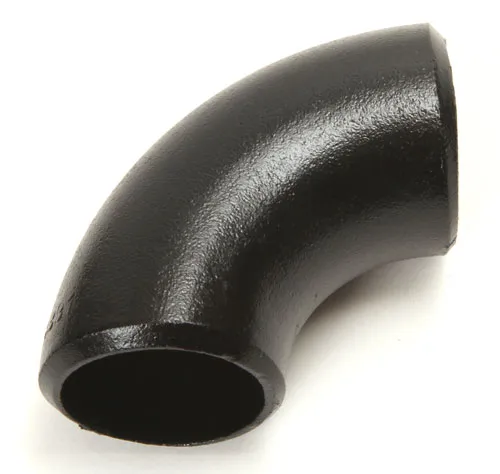-
Cangzhou Yulong Steel Co., Ltd.
-
Phone:
+86 13303177267 -
Email:
admin@ylsteelfittings.com
- English
- Arabic
- Italian
- Spanish
- Portuguese
- German
- kazakh
- Persian
- Greek
- French
- Russian
- Polish
- Thai
- Indonesian
- Vietnamese
- Zulu
- Korean
- Uzbek
- Hindi
- Serbian
- Malay
- Ukrainian
- Gujarati
- Haitian Creole
- hausa
- hawaiian
- Hebrew
- Miao
- Hungarian
- Icelandic
- igbo
- irish
- Japanese
- Javanese
- Kannada
- Khmer
- Rwandese
- Afrikaans
- Albanian
- Amharic
- Armenian
- Azerbaijani
- Basque
- Belarusian
- Bengali
- Bosnian
- Bulgarian
- Catalan
- Cebuano
- China
- China (Taiwan)
- Corsican
- Croatian
- Czech
- Danish
- Esperanto
- Estonian
- Finnish
- Frisian
- Galician
- Georgian
- Kurdish
- Kyrgyz
- Lao
- Latin
- Latvian
- Lithuanian
- Luxembourgish
- Macedonian
- Malgashi
- Malayalam
- Maltese
- Maori
- Marathi
- Mongolian
- Myanmar
- Nepali
- Norwegian
- Norwegian
- Occitan
- Pashto
- Dutch
- Punjabi
- Romanian
- Samoan
- Scottish Gaelic
- Sesotho
- Shona
- Sindhi
- Sinhala
- Slovak
- Slovenian
- Somali
- Sundanese
- Swahili
- Swedish
- Tagalog
- Tajik
- Tamil
- Tatar
- Telugu
- Turkish
- Turkmen
- Urdu
- Uighur
- Welsh
- Bantu
- Yiddish
- Yoruba

Jul . 27, 2024 08:43 Back to list
Exploring the Applications and Benefits of Mild Steel Seamless Pipes in Various Industries
Mild Steel Seamless Pipe An Overview
Mild steel seamless pipes are among the most widely used materials in various industrial applications, primarily due to their remarkable strength, durability, and versatility. Fabricated from mild steel, which is a type of carbon steel with low carbon content (typically between 0.05% to 0.25%), these pipes are devoid of any welds, making them inherently robust. This article will explore the key characteristics, manufacturing process, applications, and advantages of mild steel seamless pipes.
Characteristics of Mild Steel Seamless Pipes
One of the defining features of mild steel seamless pipes is their uniform structure. Unlike welded pipes, which may have weaknesses at the seams, seamless pipes offer enhanced structural integrity, providing greater resistance to high pressure and mechanical stress. This makes them ideal for a variety of applications that necessitate reliable and strong pipes. In addition, mild steel offers excellent machinability and formability, allowing for intricate designs and configurations suited to specific industrial needs.
Mild steel seamless pipes are also characterized by their corrosion resistance, especially when treated with additional coatings or finishes. Though they are generally not as corrosion-resistant as stainless steel, the appropriate treatment can significantly extend their lifespan, making them suitable for use in a variety of environments, including those prone to moisture and chemical exposure.
Manufacturing Process
The production of mild steel seamless pipes involves a series of precise steps to ensure quality and performance. The most common method for manufacturing these pipes is through the progression of solid round billets, which are heated and then pierced to form a hollow pipe. The process includes the following stages
1. Heating The billets are heated in a furnace to reach a malleable state.
2. Piercing After heating, a piercing machine is used to create a hollow section in the billet.
3. Elongation The hollow section is then elongated to form the desired pipe length.
mild steel seamless pipe

4. Expansion The pipe is further expanded and rolled to achieve the required diameter and thickness.
5. Finishing Lastly, the pipe is subjected to various finishing processes, such as annealing, pickling, and coating, to enhance its surface quality and performance.
This meticulous manufacturing process ensures that mild steel seamless pipes can meet stringent industrial standards.
Applications
The applications of mild steel seamless pipes are vast and varied. They are commonly used in the construction industry for structural supports, in the oil and gas industry for pipeline transportation, and in various mechanical and engineering applications. Additionally, these pipes find use in manufacturing boilers, heat exchangers, and automotive components due to their ability to withstand extreme temperatures and pressures.
Moreover, mild steel seamless pipes are increasingly being used in plumbing, water supply systems, and sewage treatment plants, benefiting from their excellent flow characteristics and strong resistance to deformation under pressure.
Advantages
The advantages of utilizing mild steel seamless pipes are numerous. Their absence of welds allows for higher strength and reliability, reducing the risk of failure during service. Their versatility makes them adaptable to various applications, while also being cost-effective compared to other materials. Furthermore, the ease of fabrication and the potential for surface treatments make them an attractive choice in sectors where both performance and aesthetics are crucial.
In summary, mild steel seamless pipes are a fundamental component in modern infrastructure and industrial applications. Their unique properties, coupled with an efficient manufacturing process, make them a reliable choice for engineers and manufacturers alike. As technology continues to evolve, the demand for these robust pipes is expected to rise, further cementing their role in various sectors across the globe.
Latest news
-
ANSI 150P SS304 SO FLANGE
NewsFeb.14,2025
-
ASTM A333GR6 STEEL PIPE
NewsJan.20,2025
-
ANSI B16.5 WELDING NECK FLANGE
NewsJan.15,2026
-
ANSI B16.5 SLIP-ON FLANGE
NewsApr.19,2024
-
SABS 1123 FLANGE
NewsJan.15,2025
-
DIN86044 PLATE FLANGE
NewsApr.19,2024
-
DIN2527 BLIND FLANGE
NewsApr.12,2024
-
JIS B2311 Butt-Welding Fittings LR/SR 45°/90° /180°Seamless/Weld
NewsApr.23,2024











